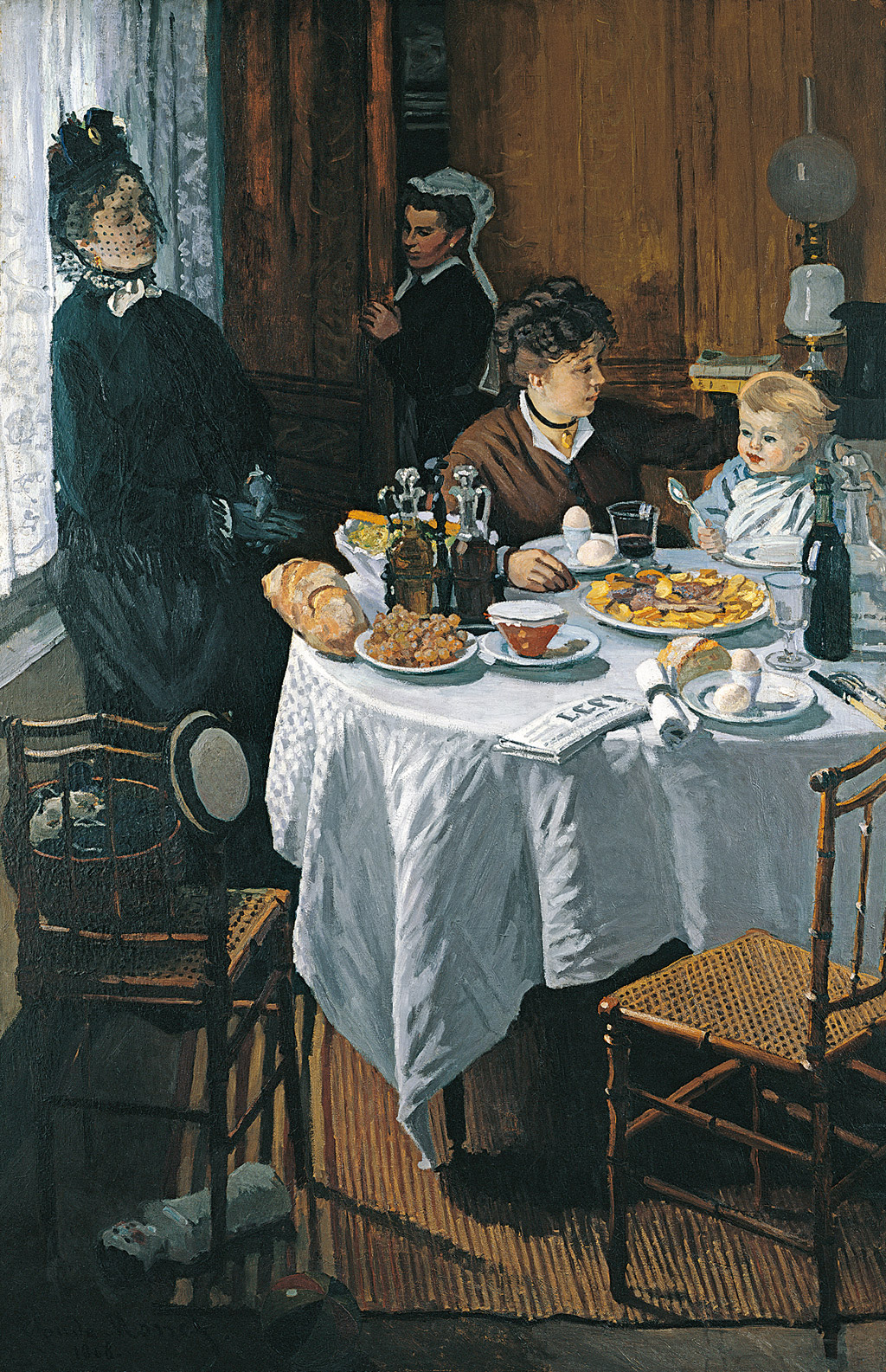It's Sunday, so it's time for another masterpiece from the Städel Museum collection. We recommend that you review more of their works in the Archive. Enjoy! :)
The painting is autobiographical. An artist constantly plagued by financial difficulties, Claude Monet had the good fortune to receive a small salary from one of his patrons in the summer of 1868. For the first time, he was able to offer his family a proper home. It was his family who posed for him here, though Monet excluded himself from the depiction. He is already awaited at the table, but for the moment he is still enjoying the role of the happy onlooker. The scene is carefree and cosy. We can almost detect a longing for middle-class standards—there is even a maid. As an artist, however, Monet did not conform to convention. Usually, a private setting such as this one would have been represented in a small genre painting. Monet provocatively painted it on the large scale reserved for historical events. The composition likewise contradicts every tradition. For example, the painter emphasised such matters of minor importance as the food on the table; indeed, he integrated an entire still life. He emphasized the emotional focus—his little boy—by casting the brightest light on him and on his mother; at the same time, however, he pushed the child to the far edge of the scene. What is more, the right-hand edge of the canvas cuts harshly through the table and chair. The jury of the conservative Paris Salon accordingly rejected the painting. It was not to be placed on public view until 1874, in the first exhibition independently organized by the Impressionists.


 Claude Monet
Claude Monet